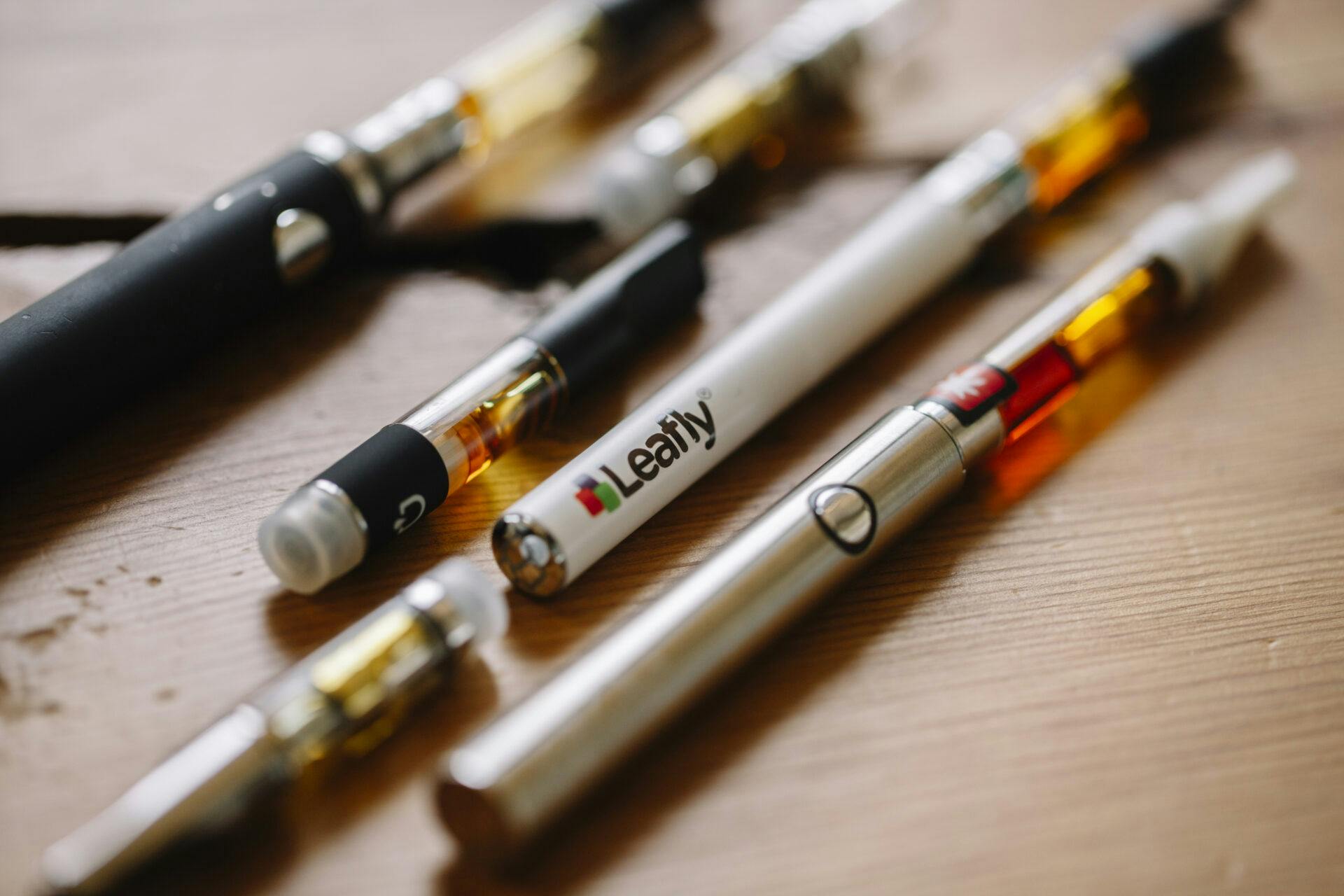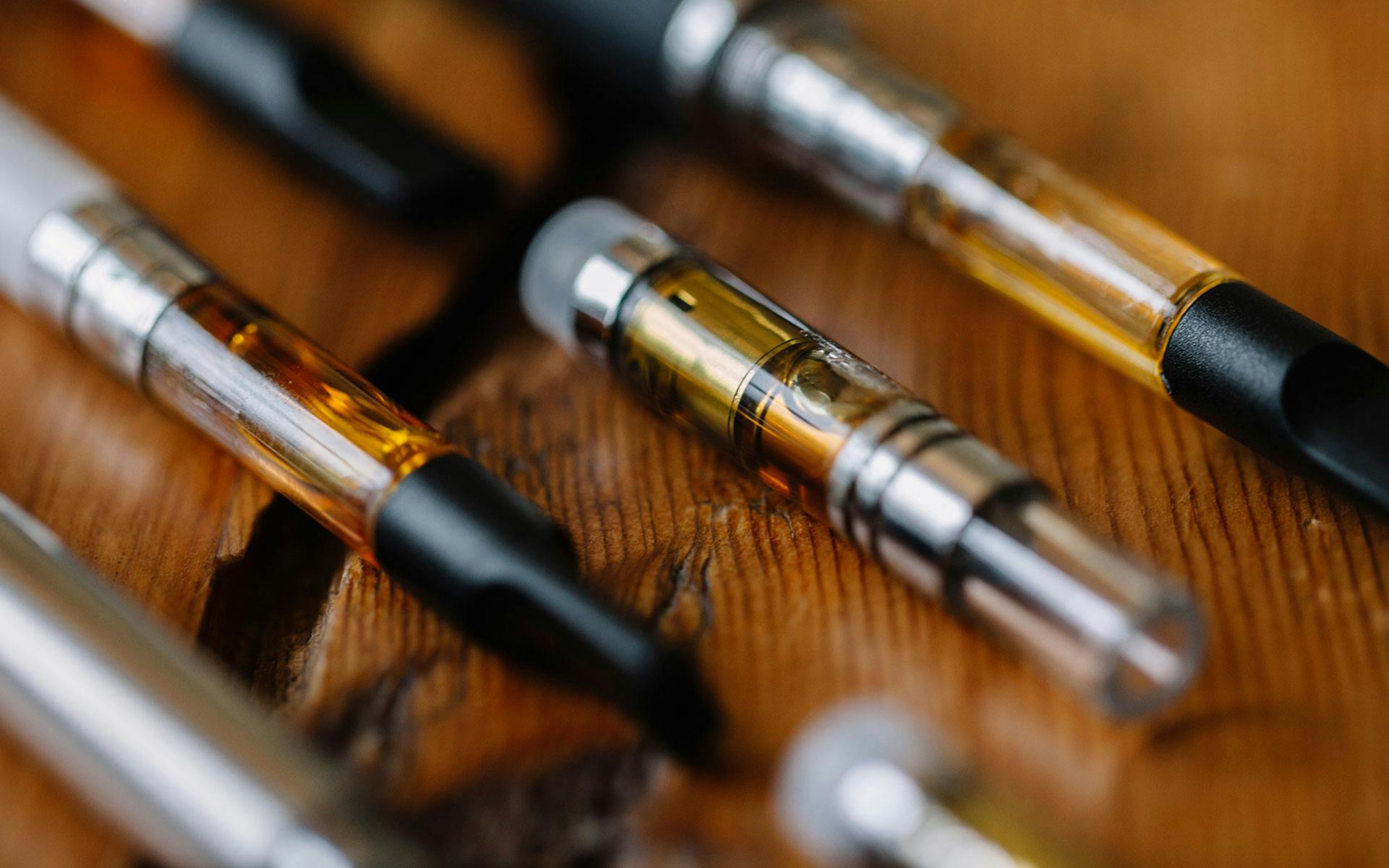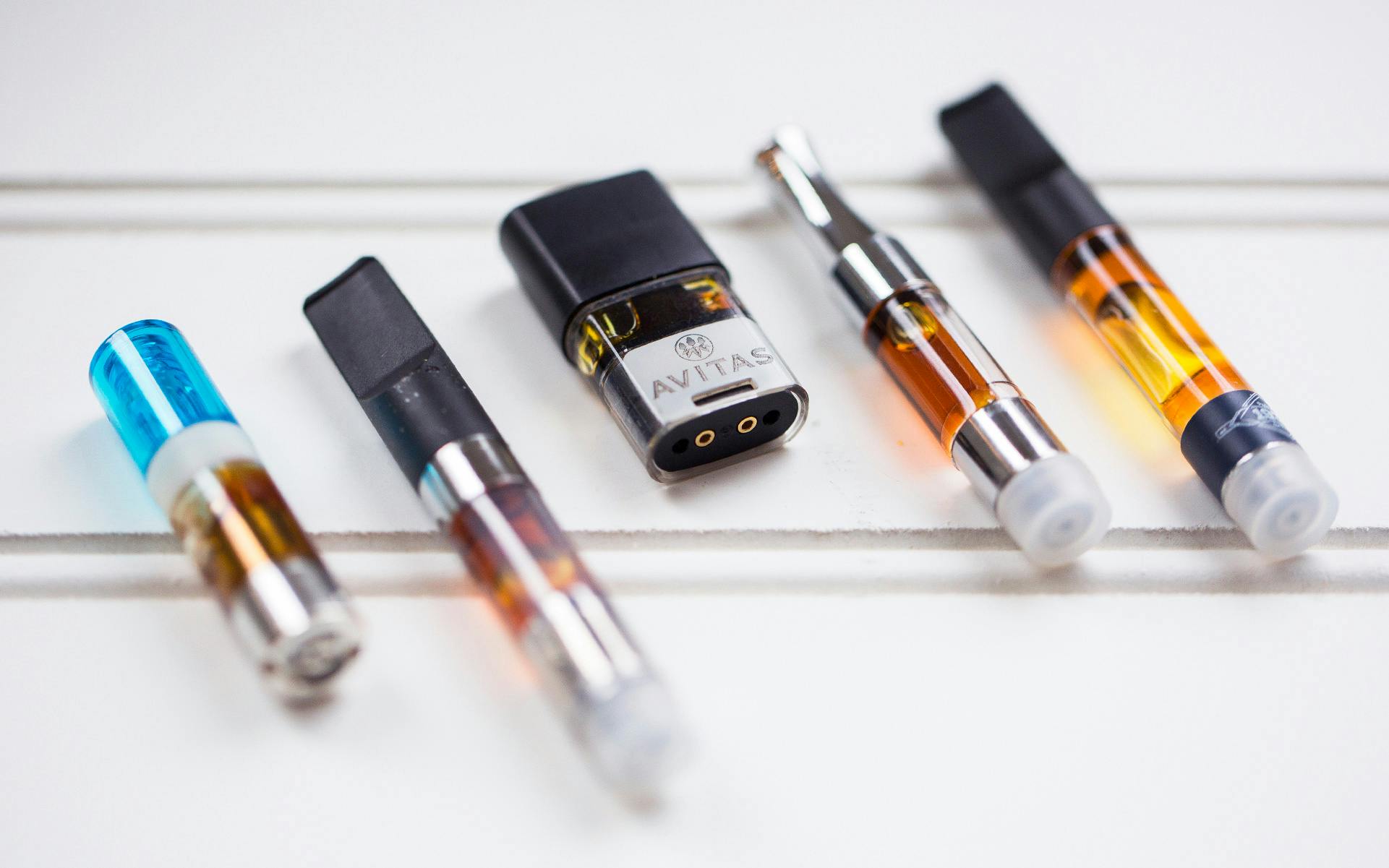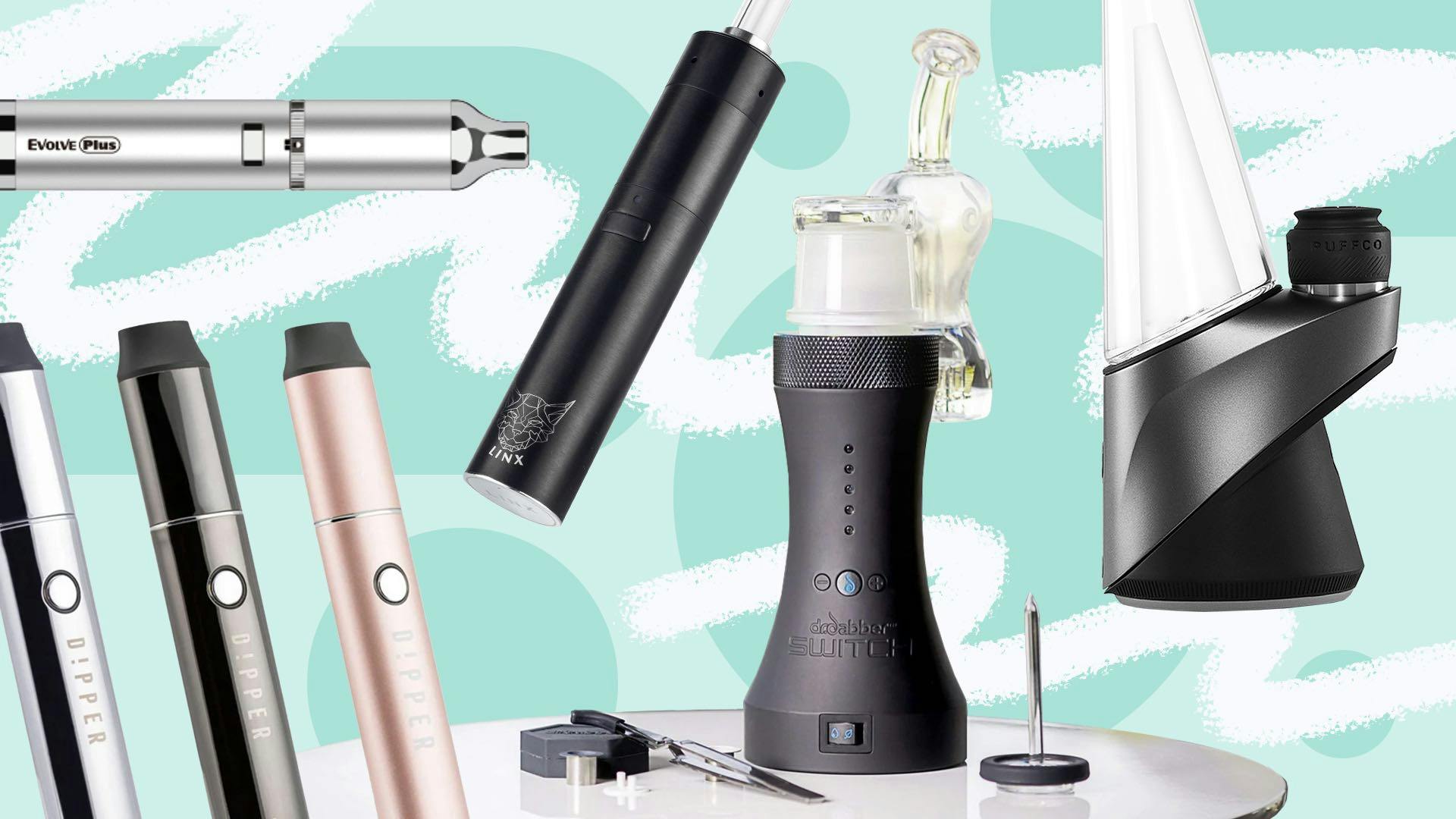
Written by Amelia Williams
Cannabis vaping is a way of consuming cannabis by inhalation, to get high or receive therapeutic benefits from weed. Vaporization of cannabis occurs at a lower temperature than combustion, which occurs when smoking weed.
Vaping does not use a flame, but heating methods called convection and conduction, which regulate temperature to ensure cannabis doesn’t burn and produce smoke. Vapor often imparts a fuller flavor and smoother inhale than smoke.
In smoking and combustion, a flame such as a lighter or match is applied directly to cannabis flower, producing smoke and a harsher hit.
Vapes certainly aren’t going anywhere, but few consumers seem to understand where they came from, how they work, and what they can offer new consumers or those who are tired of other consumption methods. Here’s everything you need to know about vaping weed.
The history of cannabis vaping
For most of our millennia-old relationship with cannabis, humans have consumed it in the most straightforward and accessible way: smoking. Along the way we found ways to imbibe it via tinctures and infused drinks like bhang, and condense it into more potent forms such as hash. Then, we invented vaping.
In the last couple decades, interest in vaping technology has boomed, largely due to our fondness for tobacco and nicotine, and to find healthier inhalation methods. One of the first filed patents for an electronic vaporizer for plant compounds came from Joseph Robinson in 1927.
Other endeavors followed throughout the 20th century, including a device by nicotine patch inventor Jed Rose, meant to find a solution for minimizing tobacco’s negative health effects. In 1993, the Cherokkee medicine man Eagle Bill invented the Shake and Vape, a pipe that vaporized cannabis.
In 2000, Storz and Bickel unleashed their first iteration of the Volcano Vaporizer. In 2003, Chinese entrepreneur Hon Lik invented the e-cigarette. Within a decade, cannabis oil vapes were hitting dispensary shelves, and dabbing cannabis was re-emerging amongst cannasseur circles after it was suppressed in the 1970s. Today, vaping is just another cannabis consumption option, and cartridges and disposable vapes raked in over $2 billion alone in 2021.
Benefits of vaping weed
The very invention of vaping was driven by the belief that it was healthier than smoking tobacco or cannabis and inhaling carcinogenic-laden smoke. Most people today choose to vape because they perceive the health risks as lower.
People also like a more discrete device that is portable and can be used without the pungent aroma of weed smoke in the air or on their person. Additionally, controlled, low temperatures allow for more activation of cannabinoids and terpenes before they are burned off. Some suggest that vaping produces stronger effects than smoking, and oil-based vape pens also offer more potency than cannabis flower.
But there is some contention. Cannabis smoke, like any burnt substance, contains carcinogenic substances that can impact lung function and immunity, but whether or not vaping is healthier is debatable.
A study from the University of Michigan argues that vaping weed is even more harmful than smoking weed or even cigarettes. Our own 2022 article questions the idea as well. Additionally, cannabis smokers tend to hold in their hits longer than cigarette smokers, so exposure is amplified.
But because cannabis remains a federally illegal substance, it’s difficult to investigate vaping’s long-term effects and more research is needed.
How do vaporizers work?
Weed vaporizers can vape dry flower and/or concentrates and use one of two heat processes: conduction or convection. Each has its pros and cons.
Conduction
Conduction is heating a substance through direct contact with the heat source. Think of it like a frying pan: You heat the pan and the food in the pan cooks.
In conduction weed vaporizers, the heat source is typically a ceramic or metal element heated by electricity. For example, with a Pax vaporizer, flower or dabs are packed into a chamber, the chamber heats up, which comes in contact with the cannabis, creating vapor that you then inhale.
A majority of weed vaporizers use conduction heating, including vape pens. Conduction allows for quick heat up times, but may not heat the product evenly because it might not touch all material. Conduction can burn material because it comes into direct contact with it.
Convection
Convection vaporizers work indirectly—the heated element never makes contact with the herb or concentrate, rather, the device heats the air inside a chamber with weed, which then produces vapor.
Think of it like an oven, which consistently circulates hot air, distributing it evenly throughout the product. Convection weed vaporizers often take longer to heat, but there is less risk of burning weed.
Vape pens and atomizers
Vape pen cartridges heat by conduction. The cartridge of cannabis oil has a heating element called an atomizer, usually a wick, ceramic coil, or metal plate. A battery device is screwed onto a cartridge full of oil, which powers and heats the atomizer, vaporizing the oil that you then inhale through a mouthpiece.
Learn more about vape pens in anatomy of a vape pen.
Types of weed vaporizers
Vape pens
By far, the most popular cannabis vaping option is the vape pen. It’s discrete, potent, portable, and inexpensive, and they are a huge part of the cannabis market.
Unfortunately, cannabis prohibition and the illicit market has allowed for the proliferation of fake vape cartridges that aren’t lab-tested or regulated. Be sure to only buy your weed vape cartridges from licensed dispensaries and reputable producers, as they could be cut with harmful substances.
Here’s how to find the best vape pen for you, and how to spot a fake vape pen.
Portable
Portable vapes have come a long way in just a decade. Their popularity can be traced back to the invention of the Pax 1 by Pax Labs, released in 2012. This vaporizer was designed for use with dry flower, and newer models also allow for concentrate vaporization at multiple temperatures. Pax vaporizers use conduction heating, but other portable vapes can use convection or a mixture of the two.
Tabletops
These large vaporizers can’t be taken outside the house and require electricity and/or batteries. The most well-known tabletop vaporizer is the Volcano, invented in Germany and popularized in North America 20 years ago.
Most tabletop vaporizers are convection vaporizers, and they can create a large amount of vapor from a small amount of weed.
Vaping cannabis flower vs. concentrates
Flower is still the most popular cannabis product and most people still smoke it, but vaping flower is more cost-effective and allows you to zero in on a specific strain’s flavor profile and unique characteristics. When vaping flower you won’t have to deal with weed smoke or the aroma lingering on your clothes.
You’re also able to adjust temperature to get the most out of flower and how it impacts you, as different compounds have different decarboxylation temperatures.
If you want to get into vaping flower, here are our favorite flower vaporizers.
Concentrate vaporizers, or e-rigs, such as the Puffco Peak, allow you to easily dab. Dabbing is a form of vaporization, which uses water for a smoother hit.
Concentrates are much stronger than flower, with THC levels between 50-80% THC, whereas flower is in the 15-25% THC range.
If you want to take your dabs to go, here are our favorite concentrate vaporizers.
Best temperatures to vape weed
Most people vape flower and concentrates way too hot. For example, you should never be dabbing at 710ºF, despite the myth that the term “710” comes from temperature.
To vape flower hot enough without compromising your high, set your temperature between 325-430ºF. We recommend starting low and gradually increasing the temp to your liking to ensure you don’t ruin your flower.
Concentrates have less plant material than straight flower, so you can go higher, between 400-600ºF. But many dabheads argue that going above 500ºF will compromise the full flavor spectrum and balance of cannabinoids and terpenes in your dabs. There should always be residue left over in a concentrate vaporizer to wipe away—if you burn it all off, turn the temp down.
Read more on the best dabbing temperatures.
What is already-vaped bud (AVB)?
When you smoke a joint or pack a bowl, you inevitably get to the roach or cash the bowl—it’s done, all the weed reduced to ashes. But if you vape flower, the weed never gets hot enough to completely burn away or turn to ash.
What you’re left with is already-vaped bud, or AVB, which usually looks brown and feels dry, but can still be used. AVB has a lot of potential, and might have a little bit of cannabinoids and terpenes in it still, and can be used for making edibles, infusing an oil, and even smoking.
Read more of Leafly’s guide to vaping weed
By providing us with your email address, you agree to Leafly's Terms of Service and Privacy Policy.





